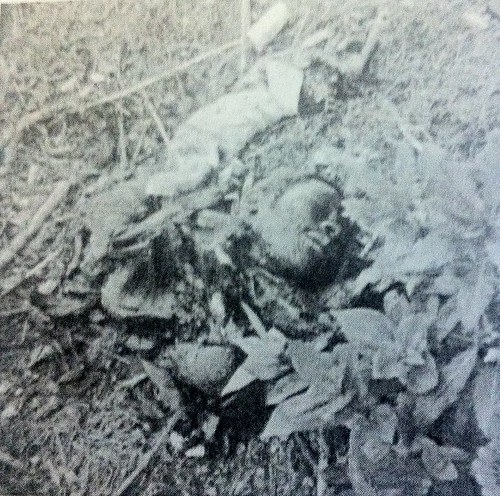... The tracer fire spitting at them through the billowing smoke from the burning camps, failed to distract the six Dakota pilots as they flew their aircraft, steadily maintaining an altitude of 450 feet above ground, along their allotted sections of the dropping zone, disgorging paratroopers. Almost as they opened, the dull green parachutes floated rapidly down into the trees.
... Corporal Charlie Warren of Stop 2 and MAG gunner, Trooper Keith White, were still in the air when they came under fire from a dozen ZANLA cadres running at them. Warren drew and returned fire with his 9mm pistol. This distracted him and he did not have time to adopt the correct flex-kneed stance before hitting the ground hard. Winded, sucking for breath, he pulled his rifle free of his parachute harness and, still under fire, dived into cover. From there, he opened fire on a group running 200 metres to his front. He then linked up with Major Jeremy Strong and White, their 3 Commando officer commanding.
Although he landed safely, Trooper Mike McDonald’s parachute, snagged in a small tree, became the target for considerable fire from a bushy streambank 70 metres away across intervening flat open ground.
By contrast, Stop 1, the first down, had enjoyed a peaceful landing into the scrub, so had the last down, Stops 5 and 6, dropped along the northeastern leg. All along the five-kilometre cordon paratroopers unbuckled and cached their parachutes and formed up in their four-man sticks, with ten metres between men, ready for action. To protect their rear, Sergeant Derrick Taylor and the three men of his stick moved to mine and ambush the road to the southwest to hold up any FPLM reaction force coming to the aid of ZANLA.
Ahead of the thin line of Rhodesian troops, the Alouette K-Cars were hammering the camp complexes with short staccato bursts of cannon fire.
... The attack was not yet 15 minutes old but among the shattered buildings and burning huts lay hundreds of dead, wounded or stunned ZANLA personnel. When the Rhodesian troops reached it later, the rows of bodies lying on the parade ground reminded Lt John Cronin of a field of mown corn.







Bookmarks